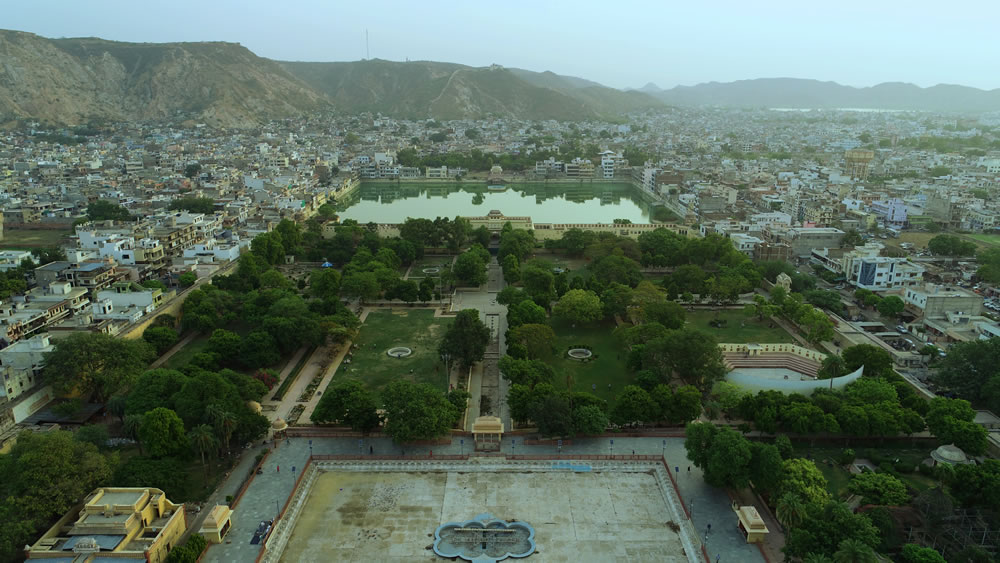Water being scarce in the region, indigenous methods for effective water collection have evolved. The city has a unique water system with a network of wells and step wells. The surface water bodies of Talkatora, Jai Sagar, Man Sagar (Jal Mahal Lake) and Ramgarh Lake were important features in the city plan. Talkatora was the central water body around which Govind Devaji temple and the Palace was developed. Water structures such as stepped wells or baories were important elements in the urban fabric. The city squares, Badi Chaupar and Choti Chaupar also had water bodies (closed in the 19th century). In the centre of each chaupar, a square enclosure with ornamental fountains was developed for social use. Fountains were connected by underground aqueducts, supplying numerous source of drinking water at street level. In the mohallas, the community wells were the source of water. There are approximately 68 wells and step wells.
For further details, refer to Indian Heritage Cities Network, Walking into the Microcosm of Jaipur, A Concept Paper, by UNESCO New Delhi. http://unesdoc.unesco.org/images/0019/001921/192113e.pdf

View of Talkatora Pond
